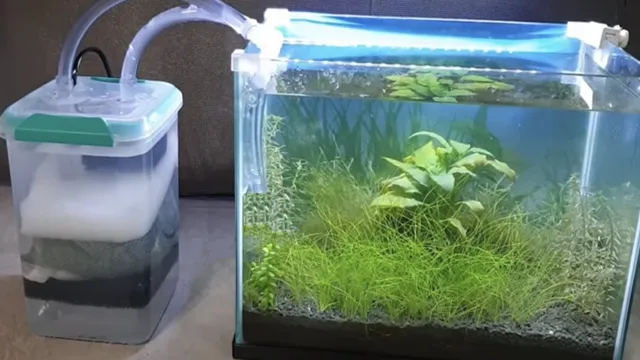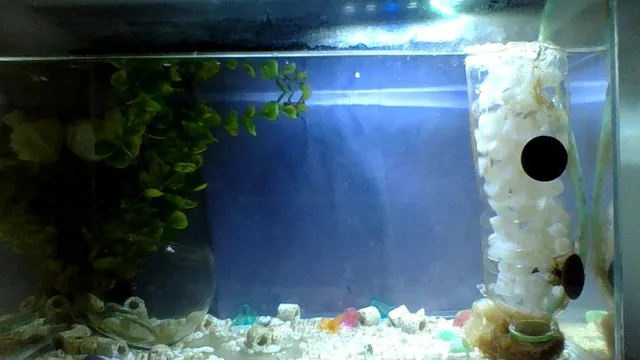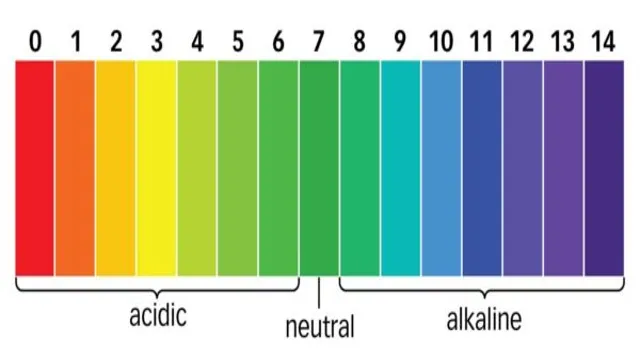If you’re considering keeping fish as pets, one of the essential things you’ll need to provide is a suitable environment for them to live in. While a filter is typically considered a mandatory piece of equipment for any aquarium, maintaining a fish tank without one is entirely possible. In this blog post, we’ll cover practical tips for those looking to maintain an aquarium without a filter.
This includes the necessary equipment, water parameters to keep an eye on, and cleaning routines to keep your fish healthy and happy. So, keep reading to find out how to manage your fish tank without a filter and provide your aquatic pets with a thriving habitat.
Introduction
Maintaining an aquarium without a filter may seem like a daunting task, but it is definitely possible. The first step is to make sure that you have a well-planted aquarium. Plants are highly effective at filtering out impurities and chemicals in the water.
You should also ensure that you do not overfeed your fish as uneaten food can rot and cause pollution. Another way to maintain your aquarium without a filter is to perform regular water changes. This will help remove any accumulated waste or debris in the water.
Lastly, it is important to have a good understanding of the nitrogen cycle and how it works. This will help you make informed decisions on how to properly cycle and maintain your aquarium without a filter. With a little patience and diligence, you can maintain a healthy and thriving aquarium without a filter.
Why choose a filter-free aquarium
When it comes to aquariums, filters have always been an essential component to ensure a clean and healthy environment for your fish. However, have you ever considered a filter-free aquarium? It may sound unconventional, but it certainly has its advantages. A filter-free aquarium mimics a natural ecosystem, creating a self-sustaining environment where beneficial bacteria break down waste materials and promote plant growth.
This means less maintenance and fewer expenses for filter replacements. Not to mention, a filter-free aquarium looks much cleaner and aesthetically pleasing without the bulky equipment. So if you’re looking for a low-maintenance, visually appealing, and eco-friendly aquarium option, a filter-free aquarium might just be the perfect fit for you.

Understanding the risks
Introduction: When it comes to understanding the risks associated with any given situation, it’s important to know what you’re dealing with. Whether you’re talking about investing in the stock market, starting your own business, or simply trying to make a decision about your health, there are always risks involved. Understanding these risks can help you make informed decisions and avoid potential pitfalls along the way.
The keyword for this section is “risks,” which will be explored in-depth throughout this blog post. So, let’s dive in and explore what it means to really understand the risks when making important decisions.
Best Practices for a Filterless Aquarium
Maintaining an aquarium without a filter can be a challenging task as the filter plays a fundamental role in ensuring a clean and healthy environment for aquatic life. However, some aquarium enthusiasts prefer a filterless setup for various reasons, including aesthetics and minimal noise. To maintain a thriving, filterless aquarium, it is crucial to establish a healthy bacterial population that will help break down waste and toxins.
This can be done by introducing live plants, which are natural filters, and using a substrate that is rich in beneficial bacteria. Regular water changes are also essential to ensure that the water parameters remain stable, and any excess waste is removed. Additionally, aeration is essential to maintain proper oxygen levels in the water, which can be achieved by adding an air stone or circulation pump.
Overall, it is essential to regularly monitor water parameters and take appropriate action if any deviations are noticed to maintain a healthy and sustainable filterless aquarium. (See Also: How to Fix a Cloudy Salt Water Aquarium: Tips and Tricks for Clear Water)
Water Change Frequency
When it comes to maintaining a filterless aquarium, water change frequency is crucial. As a general rule of thumb, you should aim to perform a 20% water change every two weeks. However, the frequency and amount of water changes can vary depending on the size of your tank and the number of fish you have.
If you have a smaller tank or a larger number of fish, you may need to perform more frequent water changes to ensure that the water quality remains optimal. On the other hand, if you have a larger tank and fewer fish, you may be able to get away with performing water changes less frequently. It’s also important to keep an eye on the levels of ammonia, nitrites, and nitrates in your tank and adjust your water change schedule accordingly.
By staying on top of water changes and maintaining a clean and healthy environment, you can ensure that your filterless aquarium thrives.
Addition of Live Plants
One of the best practices for maintaining a filterless aquarium is the addition of live plants. Not only do they add a beautiful aesthetic to your tank, but they also serve as a natural filter for your water. Live plants absorb harmful chemicals and excess nutrients, preventing the growth of algae and maintaining a balanced ecosystem.
Some great options for your aquarium include Java moss, Anubias, and hornwort. It’s important to choose plants that can thrive in the conditions of your tank, so be sure to research their specific requirements. Adding live plants to your filterless aquarium not only enhances the beauty of your tank, but also contributes to the overall health and well-being of your aquatic inhabitants.
Feeding Habits
Feeding Habits If you’re running a filterless aquarium, it’s important to develop good feeding habits for your fish. One of the best practices is to use only high-quality, low-waste food. This means avoiding cheap and filler-heavy options that contain lots of fillers, dyes, and additives.
Instead, choose foods that are rich in nutrients and contain a high percentage of protein. Additionally, it’s important to only feed your fish what they can eat in a few minutes. Overfeeding can lead to excess food waste and decay, which can pollute your aquarium water and harm your fish.
Finally, be mindful of the feeding habits of your fish and adjust your feeding schedule accordingly. Some fish are more active feeders than others, so it’s important to take this into consideration when developing your feeding schedule. By implementing these best practices for feeding your fish, you can help ensure the health and longevity of your aquatic pets in a filterless aquarium.
Alternative Water Purification Methods
Maintaining an aquarium without a filter might sound overwhelming, but there are alternative water purification methods that can help keep your fish tank clean and healthy. One option is to use live plants, which not only provide a natural filtration system but also improve oxygen levels in the water. Another method is to use a sponge filter, which is simple to use and easy to maintain.
You can also try using activated carbon or zeolite, which can be added to the tank to help remove impurities and odors. Additionally, frequent water changes and proper feeding practices can go a long way in keeping your aquarium clean. Don’t let the absence of a traditional filter discourage you from creating a beautiful and healthy aquatic environment for your finned friends.
With a little creativity and effort, you can maintain your aquarium without a filter and enjoy all the benefits of a thriving fish tank. (See Also: How to Determine If Your Aquarium Needs Resealing: Easy Tips and Tricks.)
Activated Carbon
Activated carbon is one of the most commonly used alternative water purification methods. This method involves using activated carbon filters to remove impurities and toxins from water. Activated carbon is produced by heating charcoal or other carbon-rich materials to a high temperature, which creates a porous material with a large surface area that can absorb impurities and toxins.
Activated carbon filters are designed to trap contaminants in the water as it passes through the filter, leaving behind clean and purified water. This method is effective for removing chlorine, pesticides, and other harmful substances that may be present in water sources. However, it may not be effective for removing certain types of bacteria or viruses.
Overall, activated carbon is a reliable and cost-effective option for treating water and it is often used in household and industrial water treatment systems.
UV Sterilization Light
UV sterilization light is a popular alternative water purification method. This type of light has been proven to kill bacteria and viruses that can cause illness, making it an effective way to ensure that your water is safe to drink. UV sterilization light works by using ultraviolet rays to penetrate the cell walls of bacteria and viruses, destroying their DNA and preventing them from reproducing.
One of the benefits of UV sterilization is that it does not add any chemicals to the water, making it a natural and environmentally friendly method. While it may not remove all contaminants from your water, UV sterilization is an excellent addition to a multi-barrier approach to water purification. So if you’re looking for a way to ensure that your water is safe to drink, consider adding a UV sterilization unit to your water treatment system.
Bio-wheels and Sponge Filters
When it comes to water purification in fish tanks, there are a variety of methods available. Two popular options are bio-wheels and sponge filters. Bio-wheels work by creating a wet-dry environment that encourages beneficial bacteria growth, which in turn breaks down harmful ammonia and nitrite in the water.
This process helps to keep the water clean and healthy for your fish. Sponge filters, on the other hand, work by trapping debris and waste in the filter, which is then naturally broken down by bacteria. While these methods may not be as efficient as some traditional filters, they can be great alternatives for those who prefer a more natural approach to water purification.
So whether you’re looking for a way to keep your fish tank healthy without harsh chemicals or just want to try something new, bio-wheels and sponge filters are worth considering.
Conclusion
In the words of Confucius – “Give a man a filter, he’ll have clean water for a day. Teach a man to maintain an aquarium without a filter, he’ll have healthy fish for a lifetime.” It may seem daunting to maintain an aquarium without a filter, but with proper water changes, good bacteria, and the right amount of plants, your fish can thrive in their own self-sustaining ecosystem.
So, if you want to save energy, challenge yourself, and have happy fish, ditch the filter and give your aquarium a chance to become a natural work of art!”
Is a filter-free aquarium right for you?
If you’re tired of the constant hum of a filter in your aquarium, you may want to consider alternative water purification methods. While filters are the most common way to keep aquarium water clean, there are other options that may work better for your individual needs. One example is a plant-based filtration system, where aquatic plants are used to absorb nutrients and impurities from the water. (See Also: How to Balance Aquarium pH: Tips and Tricks for a Healthy Tank Environment)
Another option is a UV sterilizer, which uses ultraviolet light to kill harmful bacteria and parasites. Keep in mind that these methods may require more maintenance than traditional filters, but they can also provide a more natural and visually appealing environment for your fish. Ultimately, the choice of whether to use a filter or an alternative method comes down to your personal preferences and the needs of your aquarium’s inhabitants.
FAQs
Is it possible to maintain an aquarium without a filter?
It is possible to maintain an aquarium without a filter, but it requires regular maintenance and attention to water quality.
What are some alternatives to using a filter in an aquarium?
Some alternatives to using a filter in an aquarium include using live plants, frequent water changes, and adding aeration devices.
How often should I do water changes in an aquarium without a filter?
Without a filter, water changes should be done more frequently, ideally every 1-2 weeks. The frequency may vary depending on the size of the aquarium and the number of fish.
Can I use chemical treatments to maintain water quality in an aquarium without a filter?
While chemical treatments can be used in an aquarium without a filter, they should only be used as a supplement to other maintenance practices like regular water changes.
Do I need to adjust my feeding practices in an aquarium without a filter?
Yes, feeding practices should be adjusted in an aquarium without a filter. Overfeeding can lead to excessive waste and poor water quality, so feed only what your fish can consume within a few minutes.
Can I keep the same number of fish in an aquarium without a filter as I would with a filter?
No, you should keep fewer fish in an aquarium without a filter to reduce the amount of waste produced. A general rule of thumb is to have 1 inch of fish per gallon of water.
How can I tell if the water quality in my aquarium without a filter is poor?
Signs of poor water quality in an aquarium without a filter include cloudy water, algae growth, foul odors, and sick fish. Regular water testing should also be done to monitor levels of ammonia, nitrite, and nitrate.







